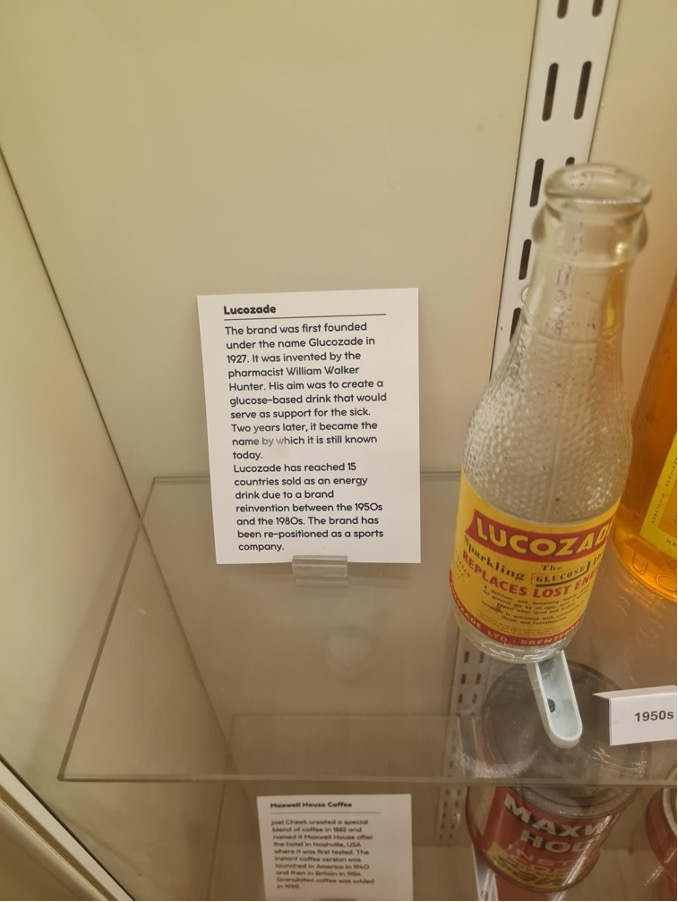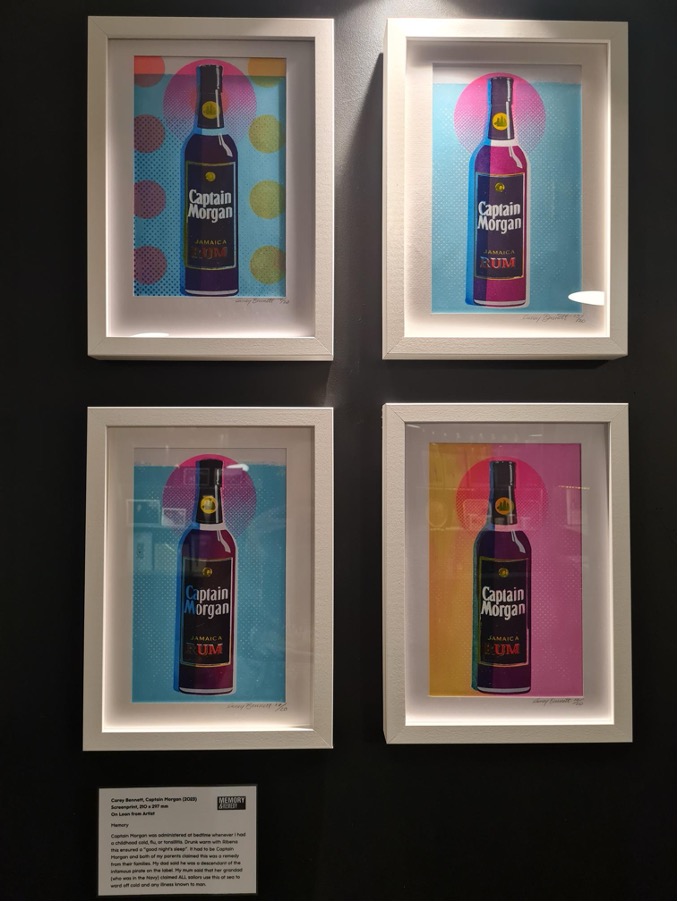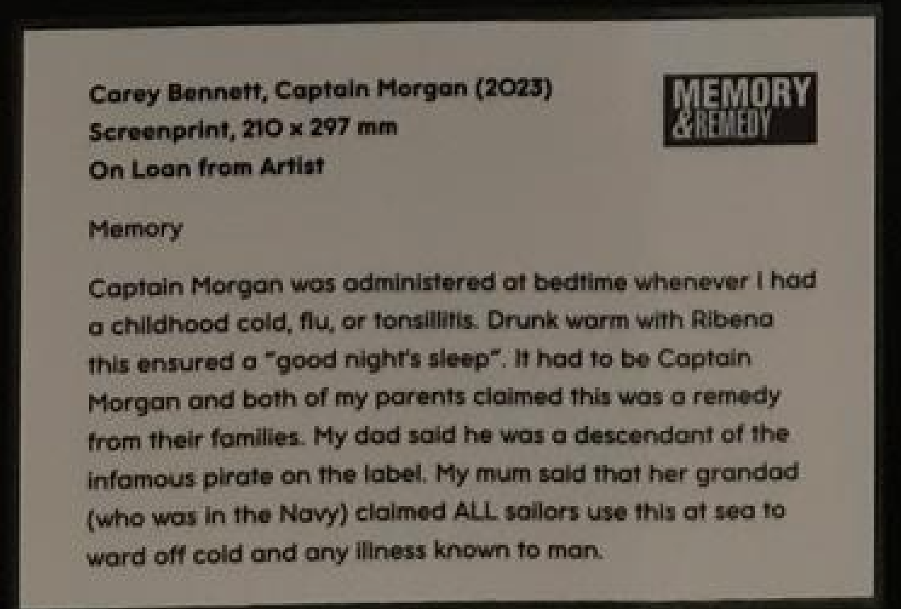I’m standing alone in a brightly lit room. Its high ceilings and hard surfaces give it a sparse, empty feel. But it is far from empty. Stacked on all sides and lit from within are row upon row of glass cabinets, each boasting a uniform display of iconic, everyday brands and packaging dating back to the turn of the century.
As my eyes scan the carefully curated shelves, they catch an unexpected, yet familiar sight. Emotion swells within and I’m suddenly assaulted by a rush of hot tears and an inane grin that I can’t suppress. Despite the fact I’m no longer alone, and against my will, I openly weep at the array of empty bubble bath bottles in front of me, snivelling and smiling at the same time.
See for me, those Matey bubble bath bottles aren’t just a collection of empty plastic containers dating back to the late 1950s; they represent everything that was good and safe and carefree about being a kid and living at home. Bubble baths on a Sunday night; the ritual of hair washing; taking toys for a swim and pretending to be a mermaid; the warm fluffy towel and being wrapped up like a sausage roll...
Ugh, I’m crying even as I write this.
But why? What is it about an iconic brand or logo from our past that has the power to induce impromptu tears of joy in sensible, grown adults?
It’s a phenomenon the London Museum of Brands is dedicated to investigating; and one the museum staff are all too familiar with. In fact, public displays of uncontrolled emotion are par for the course according to one team member on the desk, who says she hands out tissues as regularly as tickets to the museum’s visitors.
The Museum of Brands
London’s Museum of Brands started life as a private collection, belonging to consumer historian Robert Opie, who began collating items that showcase the evolution of products and advertising more than 50 years ago.
He first exhibited his various finds at the V&A in 1975; then in 1984, he opened the first museum dedicated to packaging and advertising in Gloucester.
Forty years and two locations later, the now-formidable horde of iconic brand merchandise and memorabilia that includes household items, consumables, toys, clothing, and entertainment has its home near the famous Portobello Market, incorporating multiple new galleries, event spaces, and even a garden.
Why am I telling you all this? Well, for one, as a self-billed ‘nostalgic journey through
200 years of consumer culture’ the museum lives up to its own hype and is well worth a visit; and for two, the collection has much to teach us about how to build an iconic brand.
A powerful connection
What do all iconic brands have in common? The answer: they’ve succeeded at connecting with their audience.
No matter the product or service, every brand represented within the museum’s collection has a story to tell – and in turn, the people who’ve engaged with it have incorporated it into their own stories, blending them with memories of their loved ones and special times when they’ve felt cared for, happy, or excited.
When these two narratives become inextricably intertwined, you have the makings of an iconic brand.
There are countless examples of this displayed throughout the museum. Perhaps the most compelling is the Brand Histories exhibition, which charts the evolution of numerous household brands from decade to decade.
It demonstrates how the most well-loved and successful brands have stood the test of time by not only staying true to their core values but also by being responsive to their consumers’ practical and emotional needs.
This back-and-forth connection between brand and user forms a kind of symbiotic relationship. And when you have over 100 years of Persil packaging history staring you in the face, it’s easy to see how the brand’s evolution – and its continued success – has been brought about by the close relationship it’s built with its users.
From establishing itself as a market-leader with its bleach-containing formula ‘For the whitest wash’ to asserting itself as the parental go-to for its no-nonsense approach to tackling even the toughest stains, Persil has been speaking directly to its target audience’s needs for over a century.
And then there’s the emotional connection: How caring for your family’s clothes is another way of loving them; choosing Persil every time because it never lets you down; the security of a footie kit that’s washed and ready to go for match day; the scent of a freshly laundered t-shirt that unmistakably smells like ‘home’.

Right time, right place
Filthy footie kits aside, there are of course other ways to encourage consumers to connect with your brand.
Some of the strongest and most enduring brand relationships are formed through ‘situational marketing’, that which focus on the time and place a person might engage with your product and the emotions they might be experiencing at that time.
This is especially powerful if the situation already promotes a positive feeling, and by association, your product or service comes to induce a similar feel-good response by proxy.
Obvious examples of this are things like seasonal foods and drinks – the kinds of tastes and smells that we come to associate with certain times of the year, such as Christmas. Coca-Cola has this one in the bag.
But the same is also true of products that are associated with feeling not so good. Lucozade has done an exceptional job of establishing itself as the quick fix for a speedy recovery – both from over exertion and illness – with its bright-orange optimism and promise to replace lost energy.
The brainchild of pharmacist William Walker, Glucozade (as it was known when it launched in 1927) was billed as a glucose-based drink to support the sick. Now, nearly 100 years later, this iconic brand of medicinal pop is so firmly rooted in the narrative of our collective psyche, it’s still the favoured go-to drink for convalescents and a firm fixture on hospital bedsides the world over.
And how do you feel when someone brings you Lucozade when you’re ill? The answer is ‘instantly better’, making you love the person and the product even more.
Off the back of this, the now-iconic brand has successfully navigated a second, more recent stream of revenue, gaining popularity as an isotonic sports drink. Embracing this repurposing by consumers, Lucozade responded with a suitably dynamic rebrand, further cementing the idea that, if you want to be at your best, you should reach for the Lucozade.



Memory & Remedy – Carey Bennett
An exhibition currently being held at the Museum is Memory & Remedy – a collection by screen-printing artist Carey Bennet which explores her personal associations with childhood sickness and at-home remedies given by her parents.

Alongside this Captain Morgan print, the artist shares the story of how this particular brand of spiced rum became an intrinsic part of her childhood:

Iconic brands as therapy
From building an emotional relationship with a brand that’s so strong, you believe it’s the only thing that will get you off your sickbed, it’s not a huge leap to see how iconic brands and logos themselves are now being used in therapy.
The museum’s Living Brands project is an outreach programme that works with people living with dementia.
Through Creative Reminiscing sessions, which take place at the museum and remotely in care homes and community centres across West London, experienced museum staff and volunteers encourage participants to engage with pieces from the museum’s collection that hold special significance for them, using sounds and scents from the past to bring the products to life.
The sessions help participants recreate memories and take part in creative discussions, with a unique multi-sensory approach that’s proven beneficial for mental and social wellbeing.
The takeaway
So, it seems my emotional bubble bath breakdown is actually pretty normal; in fact, it’s kind of healthy, in a way. More importantly, it tells us a lot about how to build an iconic brand.
The secret is in the storytelling. By telling a good story with your product or service, you’re inviting your consumers to make it a part of theirs. And once they’re engaged, you should continue to feed that relationship and nurture an emotional attachment as it grows. Over time, it will evolve into something that’s inextricably linked to their daily lives, affirming your brand’s place in the hearts and minds of your audience and thereby securing its iconic status for decades to come.
Who knows? In another 30 years’, it could be emotional ties with your brand that spark tears of joy.
Do you want help putting together a killer brand story and sharing it with the world? Contact the team at Formation.